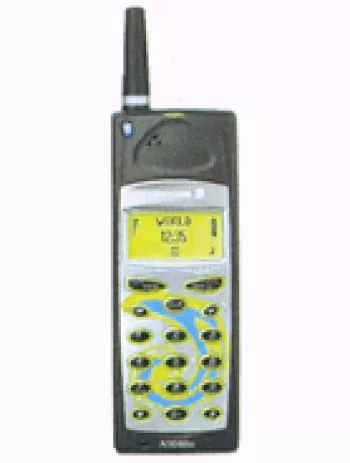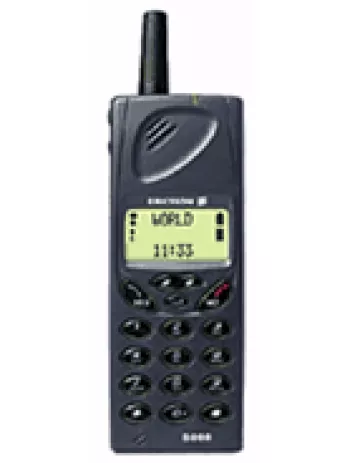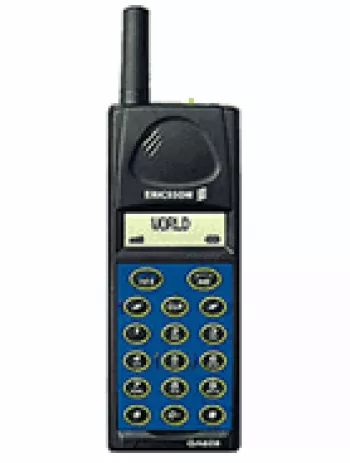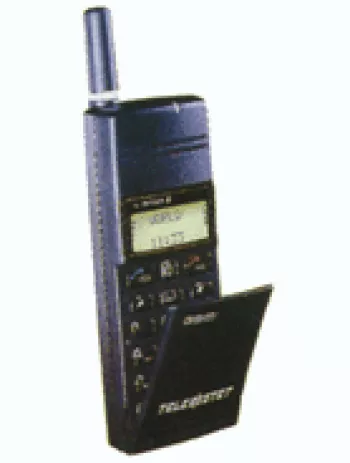
Overview of Ericsson A1018s
The Ericsson A1018s is a notable model from Ericsson, released in the late 1990s. It represents the era of mobile phones that focused more on fundamental communication tasks rather than modern smartphone capabilities. By looking at its form, function, and features, we can appreciate how technology has evolved and understand the foundation upon which current smartphones are built.
Design and Build
The Ericsson A1018s was distinguished by its robust and simplistic design. Its dimensions were 130 x 49 x 27 mm, which made it quite larger and heavier compared to today's standards at 163 grams. The phone was designed with a solid plastic body, giving it a durable construction that was typical of mobile phones from this period.
One of the characteristic features of the A1018s was its antenna, which projected from the top of the phone – a common trait among mobile phones during the late 1990s. The phone utilized a Mini-SIM, placing it firmly in the early iterations of mobile technology before the transition to micro and nano SIM cards.
Display
The display for the Ericsson A1018s was a monochrome graphic type capable of displaying 3 x 12 characters. This simplicity highlighted the phone's focus on essential communication, with no intent on indulging in visual display technologies. Its straightforward interface concentrated on delivering clear and basic information to the user.
Network and Connectivity
On the network front, the A1018s was equipped with GSM technology supporting bands GSM 900/1800. This allowed it to cover a good range of territories, thereby being highly functional in many parts of the world at the time. However, it lacked GPRS and EDGE capabilities, which restricted it from accessing higher-speed mobile data possibilities that came with later models.
Battery Life
Ericsson A1018s was powered by a removable NiMH 800 mAh battery, which was quite standard for phones of that era. It offered a standby time of approximately 80 hours and a talk time of around 265 minutes. This battery capacity meant that the phone could handle a reasonable amount of talk time before requiring a recharge, helping it fit well into the lifestyle of its contemporary users who relied primarily on voice calls.
Sound and Alerts
The phone featured monophonic ringtones, which were common before the advent of polyphonic and MP3 ringtones. It also included a composer feature which allowed users to create and personalize their ringtones. The absence of a loudspeaker and 3.5mm headphone jack indicated limitations in audio output options that are now seen as basic functionalities in modern devices.
Messaging and Other Features
SMS was the primary messaging feature, allowing users to send simple text messages – a revolutionary feature at the time which expanded the scope of mobile communication beyond voice. In terms of other features, the A1018s came with basic utilities such as a clock and an alarm function. However, it offered no games, web browser, or application support like Java, which underscores its dedication to fundamental telecommunication tasks.
It also supported 24 languages, making it accessible to a global audience, a known priority for Ericsson as they pushed for expansive international reach with their mobile devices.
Market Release and Legacy
First announced in 1999 and later discontinued, the Ericsson A1018s was part of the wave of mobile devices pushing the limits of technology at the tail end of the 20th century. Despite its discontinuation, it holds a special place in the timeline of mobile technology development due to its durability and focus on essential communication features.
While today's technology has advanced beyond measure since the A1018s was in production, understanding and appreciating devices like it provides important context. They were instrumental in laying the groundwork for subsequent innovations.
Conclusion
The Ericsson A1018s serves as a reminder of the technology world of yesteryear—where simplicity and durability were celebrated, and the concept of "mobile" began to evolve into something akin to our current smartphone era.
Key Features of Ericsson A1018s
- GSM Technology with 900 / 1800 2G bands
- Monochrome graphic display with 3 x 12 characters resolution
- Compact dimensions: 130 x 49 x 27 mm
- Lightweight at 163 g
- Support for SMS messaging
- 24 language options available
- Removable NiMH 800 mAh battery
- Stand-by time up to 80 hours
- Talk time up to 265 minutes
Disadvantages of the Ericsson A1018s
- Lacks support for GPRS and EDGE, limiting wireless data capabilities.
- Discontinued status makes purchasing difficult and limits support.
- Bulky design and heavyweight at 163 grams, making it less portable.
- Monochrome graphic display with limited resolution, offering minimal visual clarity.
- No expandable memory card slot, restricting storage options.
- Absence of a phonebook, restricting the storage of contacts.
- No loudspeaker, limiting audio output options.
- Lacks a 3.5mm audio jack, restricting connectivity with standard headphones.
- Missing modern communication features like WLAN, Bluetooth, and USB connectivity.
- No positioning features (GPS), limiting navigation capabilities.
- Does not include a built-in FM radio for entertainment purposes.
- Game functionality is absent, reducing entertainment options.
- Limited battery life with only 80 hours of standby and 265 minutes of talk time.
View Also
More Phones
All Rights Reserved +14266 Phones © Mobilawy 2025

























